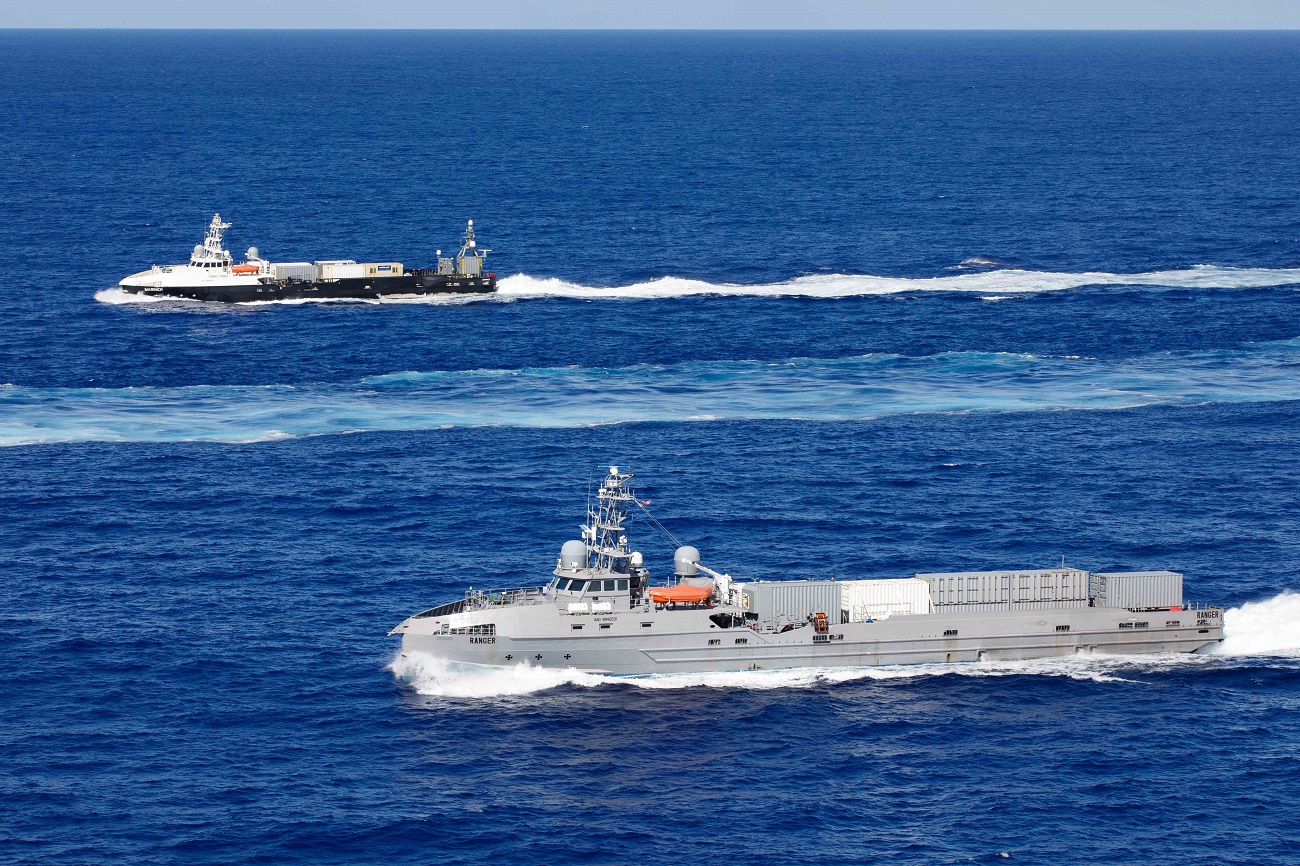The U.S. Navy unmanned surface vessels (USVs) Ranger and Mariner from Unmanned Surface Vessel Division ONE (USVDIV-1) arrived at Fleet Activities Yokosuka on Sept. 18 as part of a scheduled port visit during Integrated Battle Problem (IBP) 23.2. IBP 23.2 launched this August and is the third multi-domain unmanned capabilities exercise under U.S. Pacific Fleet’s Experimentation Plan following IBP 23.1 earlier this year. The event will focus on testing and developing capabilities and concepts for medium and large USVs to advanced manned-unmanned teaming in the Indo-Pacific. Before arriving in Yokosuka, USVDIV-1 also participated in the Navy and Marine Corps’ Large Scale Exercise 2023. During the exercise, USVs have integrated with Carrier Strike Group One to expand its maritime domain awareness in support of the Nimitz-class aircraft carrier USS Carl Vinson (CVN-70).

“Through the integration of unmanned platforms in our operations, we continue to forge a culture of learning and innovation within our Navy and with joint partners to deliver warfighting advantage. Testing and integrating emerging technologies in a demanding, real-world operational environment is vital to providing feedback that informs our progress in this domain,” said Rear Adm. Carlos Sardiello, commander, Carrier Strike Group 1. “.”
“Unmanned and autonomous technologies are key to growing our distributed maritime operations framework. By proliferating our presence in the Pacific and increasing the fleet’s situational awareness and lethality, we give ourselves more options to make better decisions at all levels of leadership,” said Rear Adm. Blake L. Converse, deputy commander of U.S. Pacific Fleet, who visited the USVs last month on Joint Base Pearl Harbor-Hickam. “.”

“Our approach is focused on integrating, exercising, and refining tactics, techniques, and procedures for immediate application into real world operations with the fleet. Since standing up USVDIV-1 as a pre-commissioning unit in 2021, we continue to turn fleet feedback from exercises into adapting technology and requirement generation in order to provide realistic and impactful capabilities that future USV programs of record will bring to the Navy,” said Cmdr. Jeremiah Daley, commanding officer of USVDIV-1.
The exercise allows USVDIV-1, the command in tactical control of the exercise, to work closely with type commanders to develop concepts of operations for unmanned platforms. The port visit marks the first time any U.S. Navy USV has visited Japan as IBP 23.2 is the first exercise to employ USVs in the 7th Fleet area of responsibility. Following the visit, IBP 23.2 will continue to test, develop and evaluate the integration of unmanned platforms into fleet operations alongside partners and allies to create warfighting advantages and ensure regional security and stability in the Indo-Pacific.
















